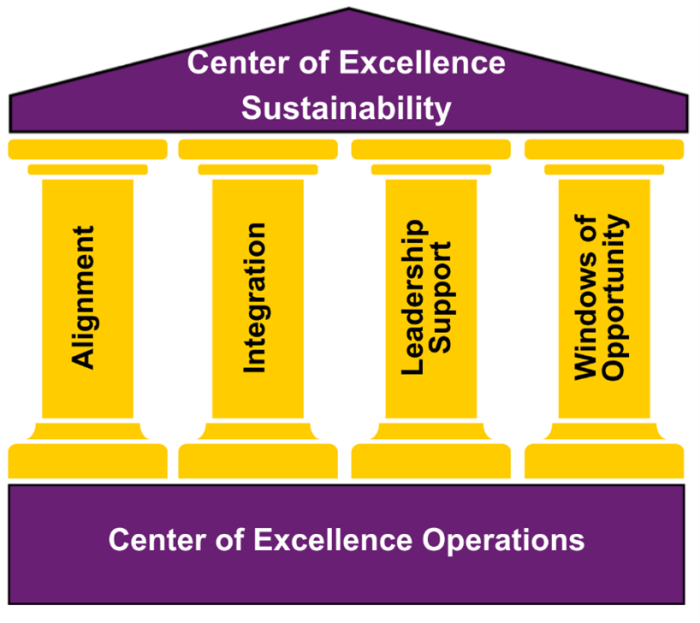Centers of Excellence (CEs) have been set up within and adjacent to healthcare delivery organizations for multiple purposes, including delivery of specialty clinical care, support for research activities, and centers for training and education. The long-term sustainability of CEs is important, as they are hubs for improving the quality and safety of healthcare.
This issue brief provides recommendations for CEs to consider when developing their sustainability plans. These recommendations are directly applicable to the recently established AHRQ Diagnostic Centers of Excellence.
Successful CEs engage in medium- to long-term planning in order to:
- Understand the environment they operate in.
- Define the scope of activities and services they will undertake.
- Hire and retain a workforce with the skills and competencies to achieve their goals.
- Ensure adequate resources to support the financial sustainability of the enterprise.
- Define and execute on the specific operational goals and outcomes of the center.
CEs focusing on diagnostic excellence need to address challenges specific to patient safety:
- The complexity of healthcare delivery organizations.
- The relative lack of institutionalized knowledge about diagnostic safety.
- The limited investment for research compared with prominent medical conditions, such as cancer.
Diagnostic error is a major source of preventable harm and increased costs across healthcare settings.1,2 Therefore, CEs supporting diagnostic excellence are particularly motivated to garner investment and assistance in disseminating their work to improve healthcare quality and safety for all people. As central hubs for research and solutions development, CEs can strengthen the sustainability of quality and safety programming within a health system and the associated positive health outcomes.3,4
Diagnostic errors are, by a wide margin, the most under-resourced public health crisis we face, yet [federal] research funding only recently reached the $20 million per year mark. If we are to achieve diagnostic excellence and the goal of zero preventable harm from diagnostic error, we must continue to invest in efforts to achieve success.
—David Newman-Toker, M.D., Ph.D.,
Director, Armstrong Institute Center for Diagnostic Excellence,
Johns Hopkins School of Medicine, 20235
A systematic review of the barriers and facilitators influencing the sustainability of hospital-based quality and safety interventions found that barriers to sustainability include:
- Lack of workforce training.
- Gaps in leadership and organizational support.
- Shortage of change agents or champions.
- Staff shortages.
- Funding deficiencies.6
These critical issues also affect many CEs that advance research and develop interventions to improve healthcare quality and safety.
Compared with the breadth of scientific literature dedicated to identifying strategies that promote the sustainability of programs aimed at quality and safety improvements, there is a gap in research to identify pathways to ensure the operational longevity of CE infrastructure. To supplement the limited scientific literature, this brief draws on six semistructured interviews with leaders and change makers who built and sustained entities or centers designed with similar contextual environments to CEs. Further, we developed insights from qualitative research on sustaining quality and safety programming within the U.S. healthcare system.1,7,8
The results of this assessment are organized as four pragmatic and actionable pillars for CE sustainability plan considerations. These are: Alignment, Integration, Leadership Support, and Windows of Opportunity (Exhibit 1). The four pillars stand on Center of Excellence Operations, which provides the necessary foundation from which CEs can become sustainable.

Exhibit 1. A structure for sustainability. The pillars sit on the foundation of Centers of Excellence (CEs) Operations, which includes environmental scanning and business operations (e.g., strategy, communications, performance management, staffing, finance). The pillars aim to provide the framing for CEs as they strategically construct their plans for long-term sustainability.



